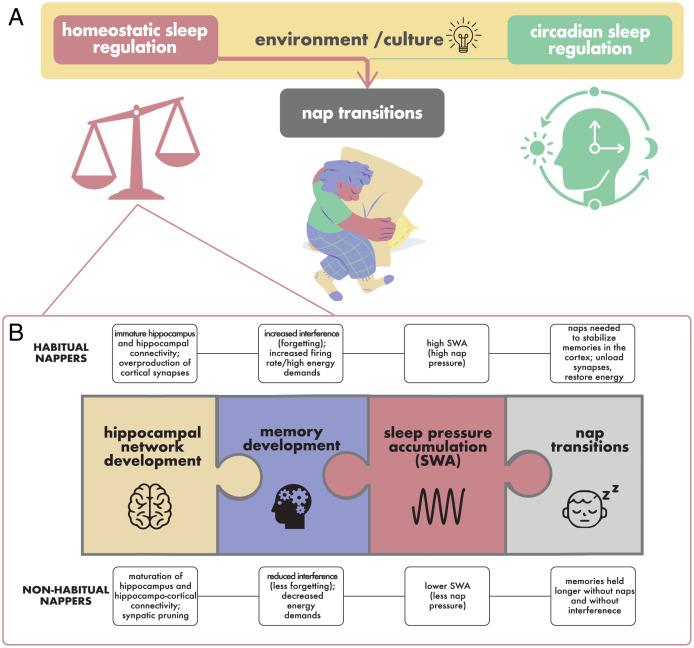Fig. 1.
Understanding nap transitions through the two-process model of sleep regulation. (A) Although environmental and cultural factors (yellow; e.g., caregiver schedules and the use of light) may influence the presence of naps, they are unlikely to explain the persistence of naps and nap transitions. Rather, nap transitions are posited to largely be related to homeostatic processes (indicated by the pink arrow), with greater accumulation of sleep pressure in habitually compared with nonhabitually napping children. (B) We hypothesize that brain development and memory development underlie this difference in homeostatic sleep pressure. Specifically, as the hippocampal-dependent memory network develops, memories can be held for longer without interference, making more space and/or using less energy resources, which may (directly or indirectly) yield sleep pressure as measured by SWA and result in nap transitions.

